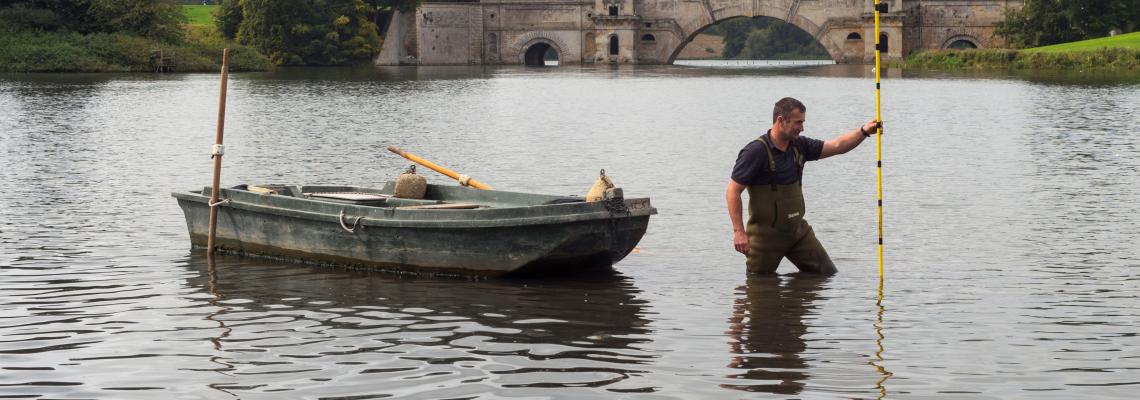£9m Project to Dredge our Lake
A massive civil engineering project due to begin in April will see more than 300,000 cubic metres of silt removed from the Queen Pool lake.

The project is expected to take up to two years to complete and will restore the lakes to their original 18th century condition.
Decades of silt have meant the Queen Pool, which is classified as a UNESCO World Heritage Site, at the Blenheim Estate site has become so shallow that it is at risk of drying out completely.
“The original water depth was over two metres; however today across more than 70% of the lake it is less than 30cms,” said our Estates Director Roy Cox.
“Unless this dredging goes ahead the lake will have effectively disappeared within the next five years and this stunning and historic landscape will have been lost forever."
“In addition to its unique importance from a heritage perspective, the Queen Pool and the rest of the lake system is a Site of Special Scientific Interest and provides a vital habitat for a huge range of wildlife ranging from water voles and otters to bats and wading birds."
“The dredging will also have a positive impact on the wider environment and improve wildlife habitats beyond the Estate,” he added.
As well as restoring the lakes to their original 18th century condition, the works will also reveal areas of the Grand Bridge that have been underwater since they were flooded by Lancelot ‘Capability’ Brown.
Submerged rooms within the bridge will become temporarily accessible again and many archaeological features – including the original layout of a canal system that pre-dated the bridge – may become visible for the first time in centuries.
Historically the lake was known to support a significant number of wintering wildfowl, reportedly home to the largest breeding population of great crested grebe in Oxfordshire. The lake is now home to a range of species of wildlife including 36 types of birds, mammals including badgers and otters, as well as 11 species of bats which roost in the Grand Bridge itself. You can read more about how we are monitoring the rare bat colonies here.
This project forms part of wider restoration works at Blenheim and will contribute to achieving one of our Ten Goals.